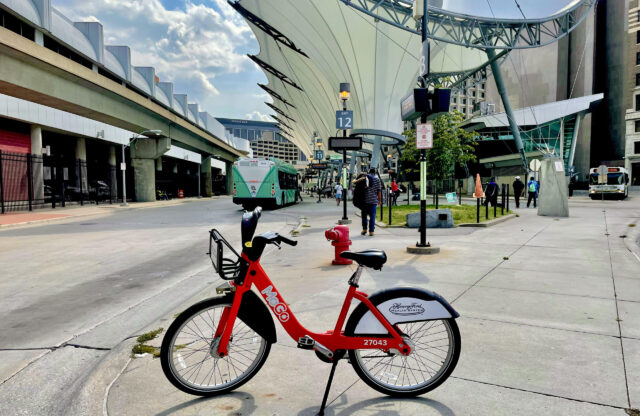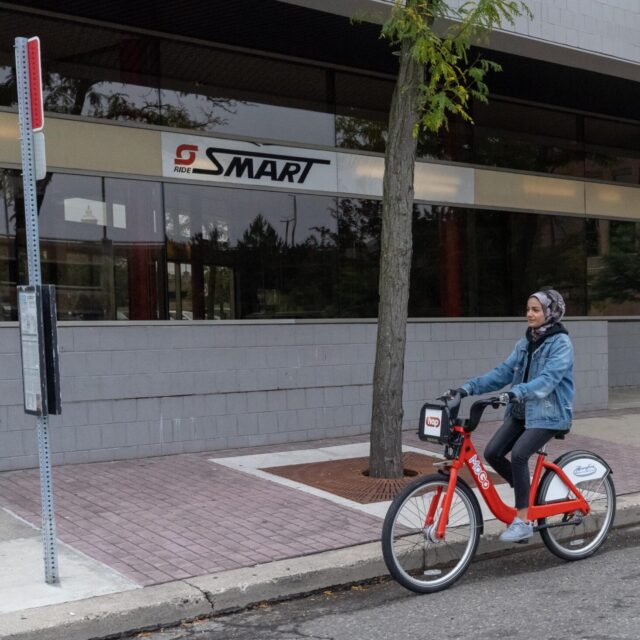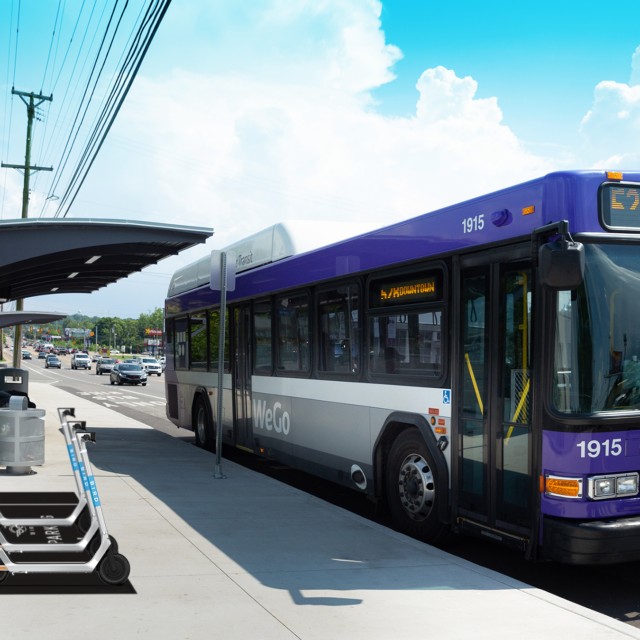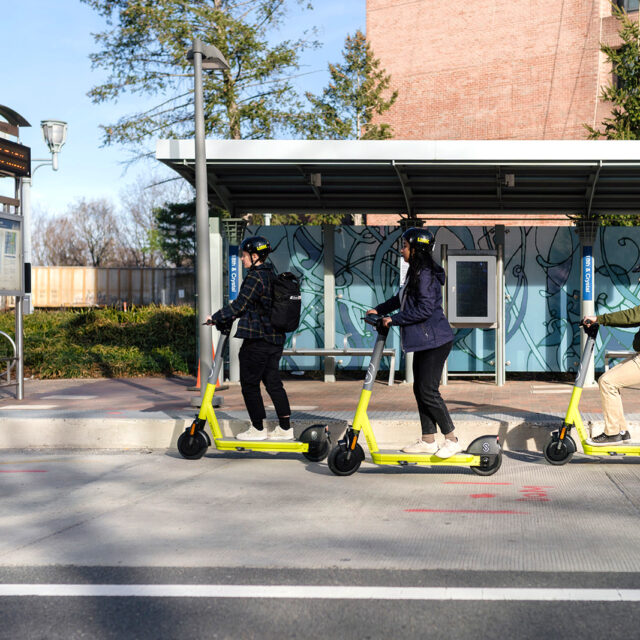Detroiters Want Better Bike Share and Transit Alignment
by Kiran Herbert, Communications Manager
May 11, 2022
Nonprofit MoGo is working in conjunction with Alta Planning + Design to analyze its current station locations and better integrate them with bus stops.

In 2018, MoGo — the nonprofit that operates bike share in Detroit, Michigan — ran a pilot program with the local Department of Transportation, offering free MoGo passes to folks who had purchased bus passes. That initial pilot led to the creation of MoGo’s Living Lab project, which launched in 2021 and seeks to better integrate bike share with transit in a more permanent way.
“We have some data from that but we realized that we really needed to learn a lot more about what people wanted and what people needed to better connect bikes and buses,” says Jacob Graham, program manager at MoGo.
Last year, in partnership with Wayne State University, MoGo developed a new survey to gauge transit riders’ travel habits and determine the reasons they were (or weren’t) using buses to connect to bikes and vice versa. The survey, which was distributed by three MoGo ambassadors in person on transit routes and electronically via notifications in the Transit app, elicited more than 1,000 responses overall. It asked people about everything from their multimodal trip habits to how they make payments. The survey also had respondents rank sample trips with different times and prices and left room for open-ended responses regarding how bike share and transit could work together.
“The majority of our survey responses came from the Transit app, which is useful data in and of itself,” says Graham. “It just shows that there are a lot of bus users that are using the Transit app that have some interest in MoGo.”
Although a report of the survey is still being finalized by Dr. Steven Lavrenz, a researcher at Wayne State, there are some key takeaways that MoGo plans to act on in the interim:
- People want better co-location of docking points and bus stations.
- People want better wayfinding to get between modes and explanations regarding how to use MoGo
- People want fair integration between transit and bike share
Overall, these answers aren’t particularly surprising — after all, MoGo’s Living Lab is predicated on the fact that, when done right, bike share can play an integral role in bringing mobility to more people and creating a more equitable transit system. The majority of the survey respondents were also BIPOC and the largest percentage (around 35%) made between $10,000 to $20,000 a year, which speaks to the fact that, in general, it’s these same populations that rely on transit the most, are least likely to have access to a personal vehicle, and currently, have the longest commute times of any demographic.
In an attempt to better serve Detroit’s average bus rider and encourage bike share use, MoGo plans on launching three pilot projects over the course of the following year. All three will address the major concerns expressed by survey respondents and the first of them — a system distribution evaluation and rebalancing — is currently underway with Alta Planning + Design. Graham says that one of the main reasons for choosing Alta was that the firm had experience with bike share equity.
“Although some have moved slightly and many are newer, a lot of our stations are in their original locations from when we launched in 2017,” says Graham. “This analysis will look at the whole system and see how we can better align it with transit, and just better align it in general.”
That doesn’t necessarily mean just moving all bike share docks closer to bus stations — if MoGo just relocated its stations to major bus routes, that wouldn’t be particularly helpful either. In its realignment, Alta will also consider how bike share might better serve places where there’s a lack of transit. When it comes to moving stations and adding new ones, all options are currently on the table.
“This is going to inform decisions although it wouldn’t really be used for any immediate changes,” says Graham, explaining that major changes will happen in phase two of the pilot and will be largely dependent on funding. “We do a number of station moves every year, so we might be able to make some strategic changes without significant cost.”
Graham anticipates that much of the work will be reallocating infrastructure MoGo already has, such as taking an under-used larger docking station and making it two smaller ones. The station siting will also account for the current realities of a post-pandemic Detroit, where many office workers are no longer commuting downtown and thus, many older MoGo stations may be less relevant.
The hope is that by the end of the pilot, more people will see bike share as a viable first- and last-mile solution and be able to utilize it in a way that’s sustainable and makes moving around the region easier. Alta’s portion of the project will wrap up in late July and after acting on many of its learnings, MoGo plans to conduct a follow-up survey with riders to gauge its success. Of course, the station siting pilot will work in conjunction with MoGo’s other two pilots, which will tackle new wayfinding methods and fare consolidation.
“What we’d like to see is something that’s a little more seamless,” says Graham. “A regional system that truly feels integrated.”
The Better Bike Share Partnership is funded by The JPB Foundation as a collaboration between the City of Philadelphia, the National Association of City Transportation Officials (NACTO) and the PeopleForBikes Foundation to build equitable and replicable bike share systems. Follow us on Facebook, Twitter and Instagram or sign up for our weekly newsletter. Got a question or a story idea? Email kiran@peopleforbikes.org.



